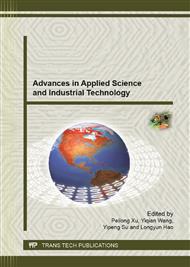p.1119
p.1123
p.1128
p.1134
p.1139
p.1144
p.1148
p.1152
p.1158
Microbial Biomass and Enzyme Activities in Chromium and Lead-Contaminated Sediments
Abstract:
The relationship between microbial biomass and enzyme activities under heavy metal pollution had attracted much attention in ecology. The experimental sediment samples were supplemented with Pb and Cr and incubated at room temperature for a month. Microbial properties such as microbial biomass, urease, catalase and cellulase activities, together with several chemical properties such as pH, total organic carbon , oxidation-reduction potential, total nitrogen and phosphorus were measured to evaluate changes in sediment qualities. Our results demonstrate that heavy metals would inhibit sediment microbe biomass and enzyme activities. Such decreases in sediments microbial biomass and enzyme activities by Pb and Cr contamination may help to evaluate heavy metals contaminated soil ecologies.
Info:
Periodical:
Pages:
1139-1143
Citation:
Online since:
September 2013
Authors:
Keywords:
Price:
Сopyright:
© 2013 Trans Tech Publications Ltd. All Rights Reserved
Share:
Citation:


